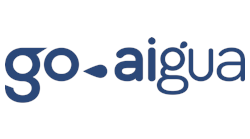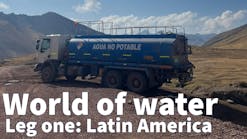Italian utility uses Geospatial AI to improve leak detection and maintenance
ITALY -- Productivity is a key metric these days as water utilities are trying to do more with less at a time when climate change, Covid-19 and urbanization are squeezing the margins of most water utilities. Using Rezatec’s Pipeline Risk product, Hera’s engineering team can potentially identify twice as many leaks compared to previous methods, increasing productivity.
In Italy, regulation to reduce water leakage and provide a secure water supply is a fundamental part of resolution 917/2017.
This means leakage is a key indicator for Hera, which is why they engaged ISOIL Industria SPA and Rezatec. Based on the observed results Hera expects the Pipeline Risk solution to increase the leaks detected in terms of breaks/km, potentially doubling the previous rate. The product owes its success to the use of satellite data to enhance geophysical and pipe data and an excellent AI model which can prioritize the network by risk. Not only can Hera’s engineering team use the product to find the pipe sections that are most likely to have a leak to prioritize maintenance, repairs or use of sensors, but Hera can take a more proactive, strategic approach to asset replacement programs in the long term.
“Even before the Covid-19 outbreak occurred, it was essential to improve the productivity of the workforce and make the most of resources. Rezatec’s solution will help utilities better understand their buried assets, prioritize investment intelligently and improve results pushing the limits of the active DMA control towards the performance fixed by the authority.” Luca Scansetti, Water Utility Service Manager, ISOIL Industria SPA.
Rezatec’s product, Pipeline Risk, helps Hera prioritise pipeline replacement by assessing the likelihood of failure in each section of pipe using historic pipe failure data to build a model which analyses data about the material, diameter and age of the asset as well as the soil and terrain that surrounds it. The other metric that is required is the consequence or impact if that failure were to occur. Rezatec’s solution can express the consequence of failure as a cost to the utility that takes into account the number and type of customers affected, third party liability, transport interruptions and the direct cost of digging up and replacing the pipe itself. The combination of likelihood and consequence of failure gives a full risk profile, or Pipeline Risk Value, which prioritises the network and visualises this in a dashboard for easy interpretation.
“Rezatec’s solution was able to provide us with the appropriate accuracy to identify leaks and will help inform our pipeline replacement program going forward.” Maurizia Brunetti, Water Supply Technical Coordination Manager Hera Group.
Leaks are not solely down to the age of the infrastructure; materials and soil combinations erode at different rates. For example, some plastic pipes laid relatively recently in Italy have a high failure rate due to poor manufacture. Pipeline Risk highlights the pipes that would have the greatest impact on your bottom line, either by saving expensive costs of a burst out of hours, or by preventing a perfectly good pipe being dug up.
Retrospective analysis of data from 2016-2018, for a small 490km section of Hera’s water network gave Hera the confidence in the Rezatec solution. Hera is now engaged in a roll out of the product across another 2,800 km of its network in 2020, to inform the wider infrastructure replacement and maintenance programs for each year.
“With budgets tight for many utilities, Pipeline Risk can help prioritize investment in infrastructure, or make savings in maintenance and repair. In this way, utilities can become more proactive, efficient and resilient.” Philip Briscoe, Chief Operating Officer, Rezatec.




